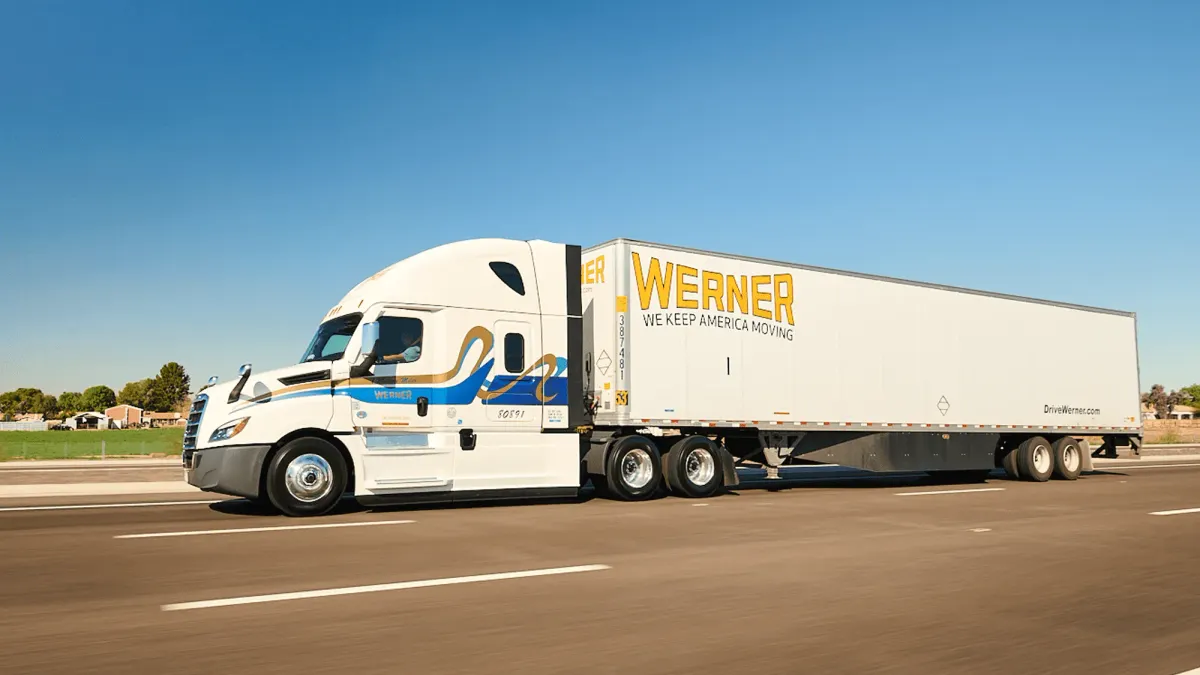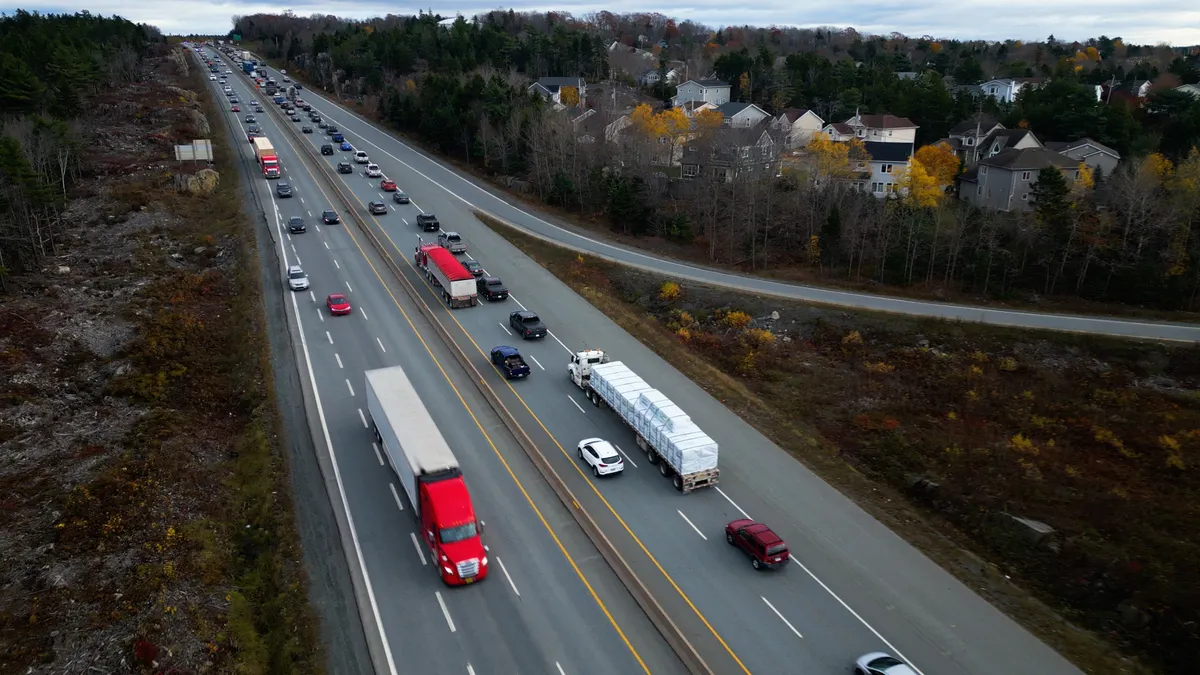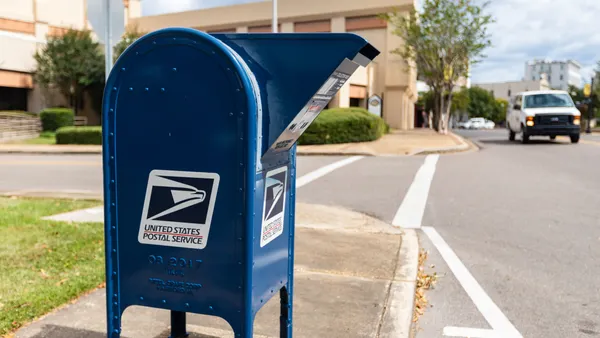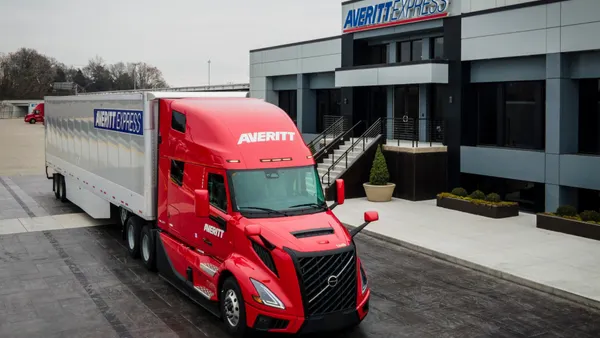Dive Brief:
- Total nonfarm payroll employment rose by 2.5 million in May, and the unemployment rate declined to 13.3%, the U.S. Bureau of Labor Statistics (BLS) reported on Friday. The report surprised the markets, as a Reuters poll showed economists expected a loss of 8 million jobs, with an unemployment rate of 19.8%.
- The transportation and warehousing sector lost 19,000 jobs in May from the previous month, after an April loss of 553,000 from March. Truck transportation lost 1,200 jobs from April. In total, the truck segment has lost 91,000 jobs since March 1, according to the BLS.
- The COVID-19 pandemic increased final-mile services, such as parcel delivery and courier systems, as the sector has seen an increase of 15,700 jobs since March, rising to a total of 865,700, according to Friday's report.
Dive Insight:
While the rate of job loss in the trucking sector has slowed, some economists told Transport Dive they are conflicted about when the full recovery will begin. The surge in restored or new jobs in May doesn't convince some experts.
Rajeev Dhawan, director of the Economic Forecasting Center at the College of Business at Georgia State University, said the federal government's $650 billion coronavirus-related legislation, the Paycheck Protection Program (PPP), brought many jobs back when reopening was allowed in various states.
"PPP did its job, but the money is beginning to run out," Dhawan told Transport Dive.
Despite the seeming effectiveness of PPP, the larger employers, such as many trucking firms, could begin a second round of layoffs because of the uncertainty caused by the coronavirus, as well as the drying up of PPP funds. Trucking firms in particular need to know there is a recovery coming down the pike to return hiring and operations to normal, he said.
"Why would you hire back people when you don't see the light at the end of the tunnel?" Dhawan said.
Robert Dieli, an economist with McKay and Co. who specializes in transport issues, said the COVID-19 pandemic is affecting the economy like a hurricane or other natural disaster — the rebound will be dramatic, but it might not occur any time soon.
Jobs numbers, he told Transport Dive, will be even more pronounced in June and July reports, and trucking could benefit.
"I think the demand for trucks will go up because we have to refill the supply chain," said Dieli.
But two major changes have to happen for a return to normality for trucking, Dieli told Transport Dive. One, uncertainty of consumers and shippers has to disappear. The uncertainty in the restaurant business has caused uncertainty in the agricultural sector, which is unsure how much food will be needed as restaurants reopen in a limited measure, Dieli said.
And two, there is a certain physical amount of work that needs to be done to reboot the U.S. economy. Dieli said it is naive to think that can happen before Jan. 1, 2021. On that, Dhawan agrees. Only a vaccine, combined with an effective therapeutic treatment system for COVID-19, will return things to normal, Dhawan said.
Truck makers are also mentioning vaccines. On Thursday, Navistar CEO Troy Clarke said 2021 will be a better year that may not return to 2018 or 2019 levels, "but if an effective [COVID-19] vaccine or treatment is developed and becomes available, the pace of the recovery could quicken."









